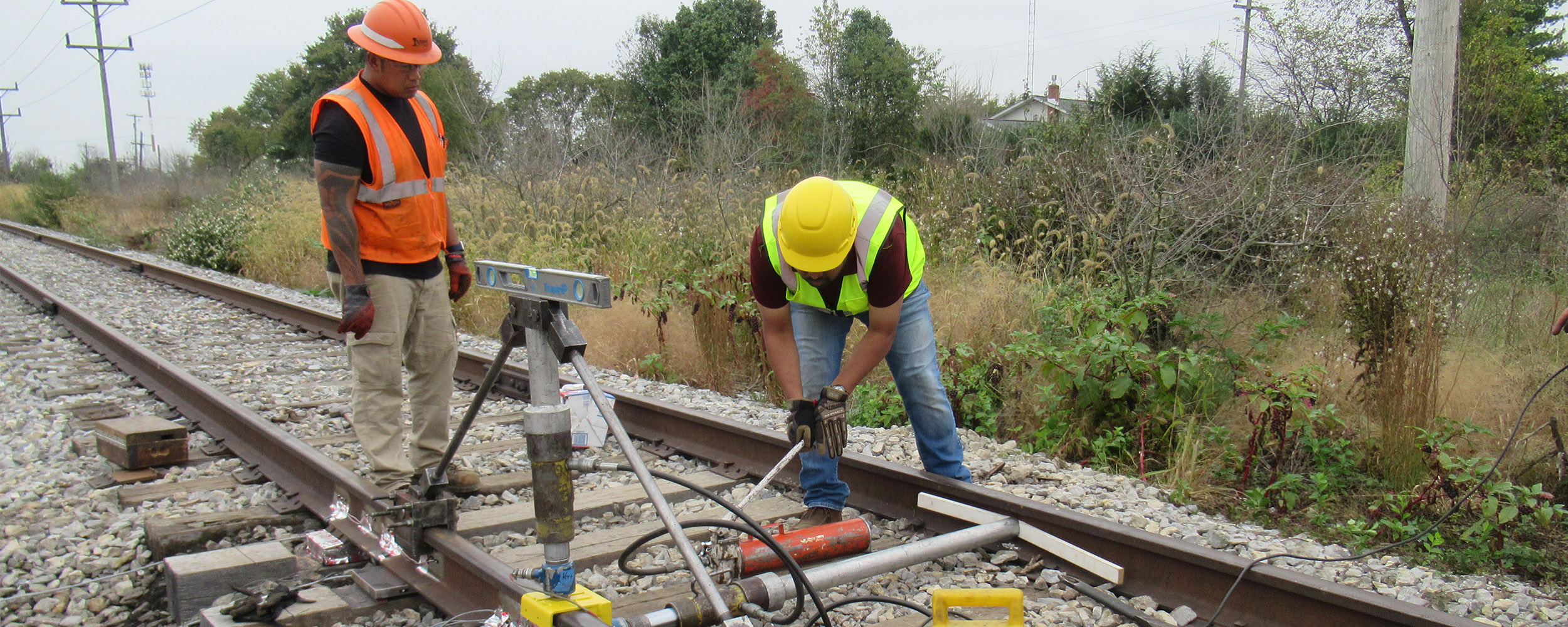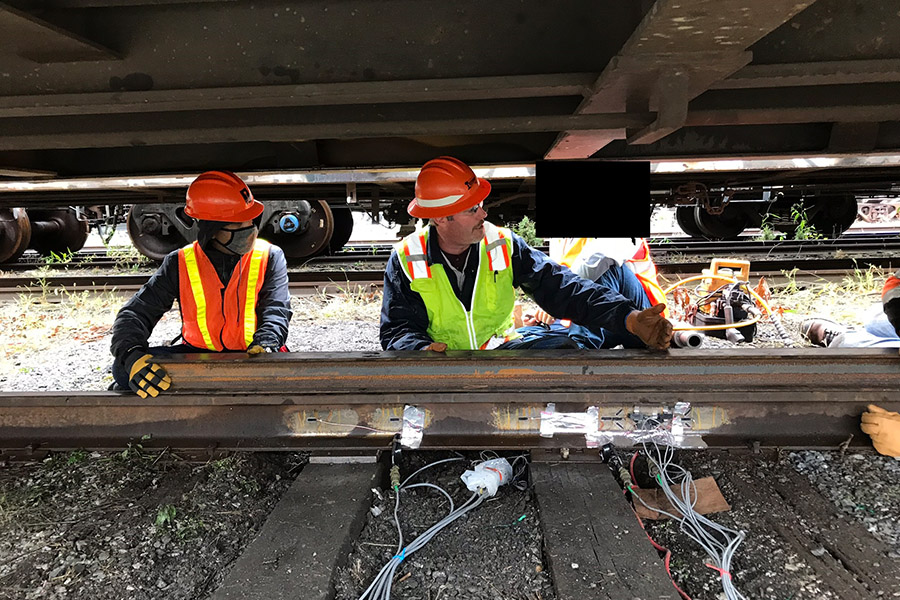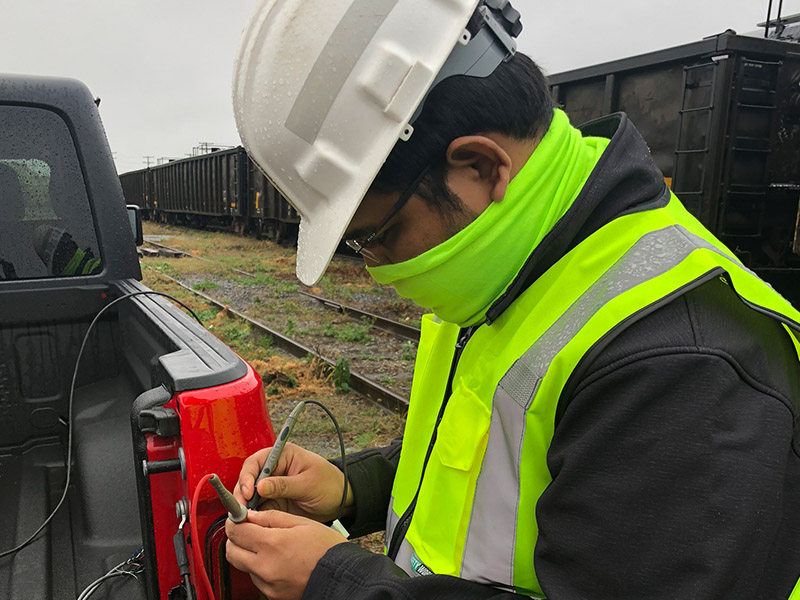
OSU researchers leverage fundamental mechanics principles for railroad track condition monitoring
Tuesday, October 17, 2023
Media Contact: Kristi Wheeler | Manager, CEAT Marketing and Communications | 405-744-5831 | kristi.wheeler@okstate.edu
Since 2019, researchers at Oklahoma State University have been collaborating with ENSCO Inc. and the Federal Railroad Administration toward developing state-of-the-art railroad track monitoring methods using advanced sensor technologies.

“Recent advancements in sensor technologies equip railroad infrastructure researchers with unique capabilities to leverage century-old civil engineering principles for carrying out real time track performance monitoring," said Dr. Deb Mishra, associate professor in the School of Civil and Environmental Engineering.
Mishra, who is leading the research, has more than a decade of experience in railroad track instrumentation, performance monitoring and numerical modeling. Currently, he and his students are working with conventional sensors as well as advanced fiber-optic technologies to facilitate real-time track condition monitoring.
One of their recent papers, published in "Transportation Research Record: Journal of the Transportation Research Board," discusses field application and validation of a strain gauge-based measurement system to assess the support conditions in ballasted railroad tracks.
“There are certain critical spots such as bridge approaches, grade crossings, etc. where the track geometry degradation rate is significantly higher compared to other locations,” said MD Fazle Rabbi, a Ph.D. candidate who is working under Mishra’s supervision. “Such locations, if left unmonitored, can pose severe safety concerns.”

Their recent paper, an integral part of Rabbi’s Ph.D. dissertation, presents detailed findings from a field instrumentation campaign carried out in a railroad yard in Chambersburg, Pennsylvania. Mishra and Rabbi worked with researchers from ENSCO Inc. to measure support conditions underneath crossties under static as well as dynamic loading. Utilizing a concept known as differential shear strain (DSS), this approach is capable of measuring the train induced wheel loads as well as tie support reactions with excellent accuracy.
The study showed that the strain gauge-based measurement approach is as accurate as other conventional tie reaction force measurement methods. However, installation of conventional sensors can be invasive, where the system used by Mishra and Rabbi is easy to install, saving railroad agencies significant time and track closure.
Read Rabbi and Mishra’s latest article here.
